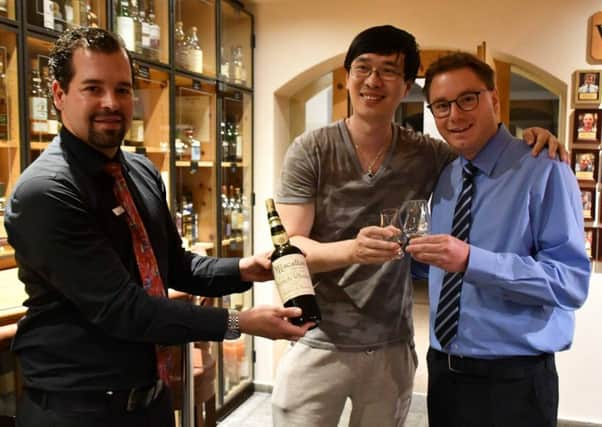'˜Most expensive dram in the world' confirmed to be fake


The probe was launched in the summer after the customer, multi-millionaire online fantasy writer Zhang Wei paid for a dram of what was thought to be one of the world’s only known bottles of Macallan 1878 still in circulation.
But following a series of investigative and forensic tests carried out by Scottish whisky valuation service Rare Whisky 101, in conjunction with the hotel, the Waldhaus Am See in St Moritz, the whisky has been shown to date back no further than 1970, deeming it almost worthless as a collector’s item.
Advertisement
Hide AdAdvertisement
Hide AdSandro Bernasconi from the Hotel has flown to Asia in the last week to refund the paying customer in full.
The sale hit the headlines as the most expensive dram ever bought in July, but whisky collectors raised a number of concerns about the bottle, including the condition of the cork and alleged historical inaccuracies on the label.
RW101 co-founder David Robertson said: “The Waldhaus team have done exactly the right thing by trying to authenticate this whisky. Over the past year, we have been invited by numerous bottle owners and auction houses to assess suspicious bottles. Indeed, we’ve noticed an increasing number of old, rare archive or antique bottles coming to market at auction, and it’s difficult to know how prevalent this problem is.
"We would implore that others in the market do what they can to identify any rogue bottles. The more intelligence we can provide, the greater the chance we have to defeat the fakers and fraudsters who seek to dupe the unsuspecting rare whisky consumer. We’re also working closely with The Macallan brand owner, Edrington, as they start to take a leadership position on fake whisky."
“As with any purchase, we would recommend that each buyer does their research, assesses the bottle and its packaging presentation, and where they can afford to do so, send some of the liquid for technical evaluation and/or carbon dating. If you do have a pre-1900’s bottle we suggest it’s worth extracting a sample to prove if it is genuine or not (most likely not). Even if the bottle has been opened, if you can prove the whisky was distilled pre 1900, then you have some very valuable whisky to enjoy!”
Sandro Bernasconi, Waldhaus Am See hotel manager and bar manager at the Devils Place bar where the whisky was sold, said: “When it comes to selling our customers some of the world’s rarest and oldest whiskies, we felt it was our duty to ensure that our stock is 100 per cent authentic and the real deal. That’s why we called in RW101. The result has been a big shock to the system, and we are delighted to have repaid our customer in full as a gesture of goodwill.”
Ken Grier, spokesman for The Macallan brand owner, Edrington, said: “As the leading brand in the fast growing secondary market for rare whiskies, with an estimated 30 per cent share by value, we take this very seriously. We praise the work that our partners, RW101, are doing to bring awareness of any fraud to light. We would urge consumers to buy from reputable sources at all times.”
A sample of the Macallan 1878 was subsequently collected by the team at RW101, and flown back to the UK for a series of forensic tests and analysis to determine, as best as modern science allows, the precise composition of the liquid, including carbon dating at the University of Oxford to verify the year of distillation.
Advertisement
Hide AdAdvertisement
Hide AdResults from University of Oxford’s Research Laboratory for Archaeology and The History of Art suggested a 95 per cent probability that the liquid was created between 1970 and 1972. Subsequent laboratory tests carried out by Tatlock and Thomson (providers of scientific services to the wine and spirits industry) showed the spirit was most likely a blended scotch comprised of 60 per cent Malt and 40 per cent Grain.